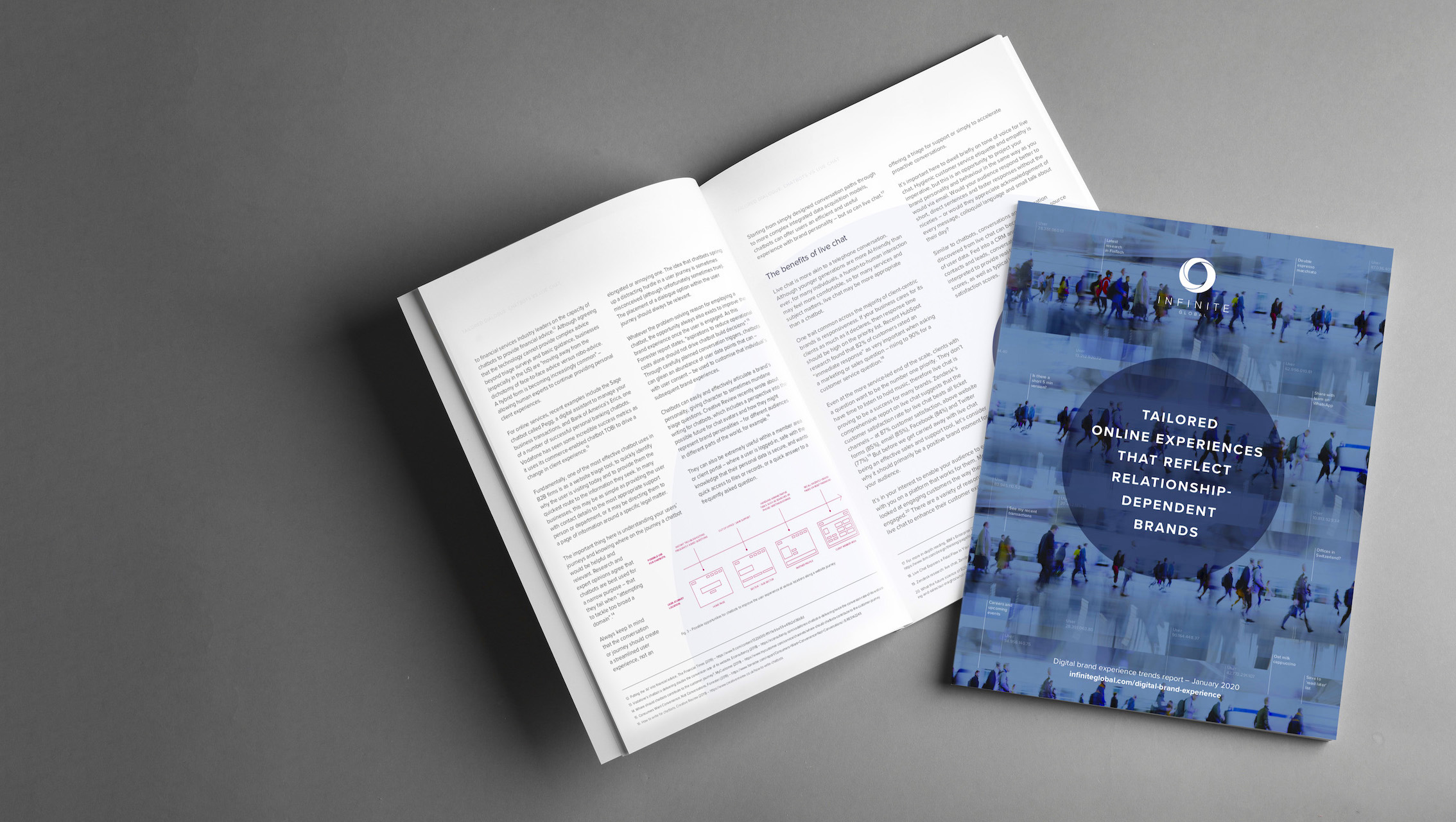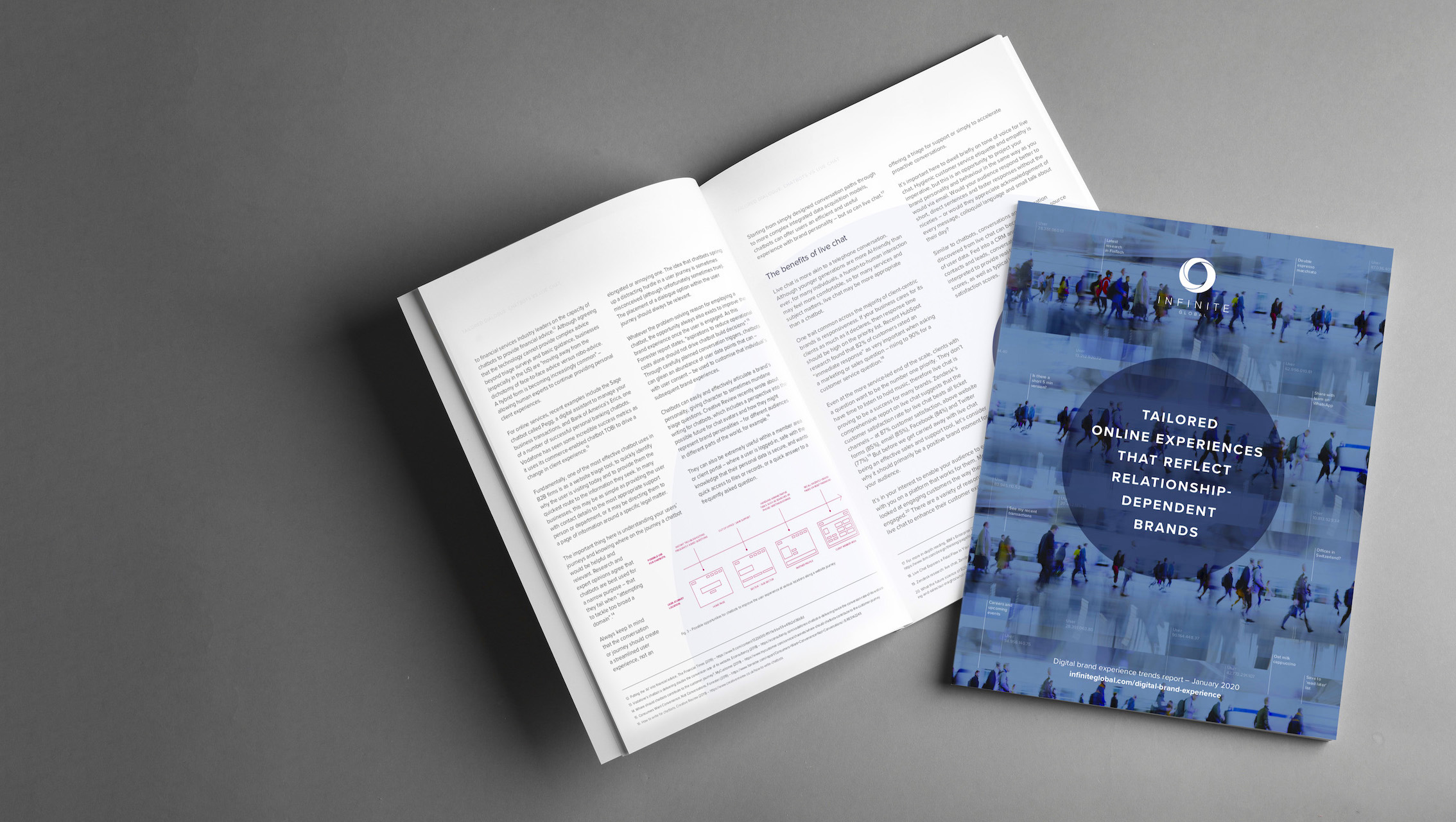Tailored online experiences that reflect relationship-dependent brands
February 20, 2020 • 15 minute read
I don’t know about you, but I like being recognized at my local coffee shop and having my drink remembered by the barista. I choose my coffee shop because the in-store service style is perfect for me and the range of products suits my needs (enough options, but not too much choice). My coffee shop experience is efficient, personal and positive. I feel like the coffee shop knows me.
This is all about brand experience. I like what this brand offers me personally. Why should it be any different with the online experience?
When I visit a digital platform that greets me with ‘Welcome back, Jed’ I have the same feeling – that my time spent here will be productive, personal and positive. If I’m served with language and an interface that’s familiar, and content that suits my needs, I feel like the brand knows me.
In this report I won’t be talking about coffee, but about how similar brand experiences can be created for online audiences – visitors to websites, campaign hubs, social channels, intranets, etc. How can you take this curated real life experience that users enjoy and translate it to a digital scenario?
This is especially pertinent for brands that are relationship-driven or relationship-dependent. When client engagement and excellent customer service are everything, positive and personal client experiences must translate across physical, environmental and digital moments.
Brands are constantly seeking more effective ways to articulate their values in ways that resonate with their audiences. I speak to numerous brand professionals who describe their organizations as ‘relationship-oriented’ or ‘client centric’ – meaning that their clients, above concepts like innovation or heritage, are what make them distinctive and drive their business. For these brands, a lot of attention goes into ensuring client experience is the priority. Face-to-face efforts are professional and tailored, events and hospitality ensure the client is well catered for, and the ultimate product or service must be responsive, uniquely relevant and above all useful.
A question remains, however: if this much effort goes into ensuring the client’s physical experience of a brand is unique, shouldn’t their digital experience be similarly pertinent?
CUSTOMER EXPERIENCE (CX)
PwC's seminal 2018 report on 'The Future of Customer Experience' provides an abundance of survey findings that prove the importance of client experience for businesses trying to differentiate themselves from competition and increase revenue.
There’s a clear parallel between a visitor to your website and a visitor to your office building.
A first-time visitor to your physical space will arrive, quickly become familiar with the reception area and give their details and reason for visiting – imparting simple personal information to ensure their experience is pleasant and swift. They may also draw judgements on the interior design, atrium background music and newspapers or brochures on display. Each of these ‘small’ experiences or touch points feeds into a broader ‘brand reaction’.
A returning client may arrive and like to be recognized. If staff remember key information, the client’s experience will instantly be more amicable and positive.
Now let’s imagine the visitor arrives at your website for the first time. With foundational experience in websites, they should quickly become familiar with the home page setup and basic site architecture – an intuitive interface and clear signposting helps here. They will also draw judgements on the design, the landing page video or music and the special reports or brochures on display.
A returning client may arrive and like to be recognized… but here’s where the parallel often breaks down. Even after a second, third, tenth visit to your website, an existing or potential client has to go through the same journey to reach the information they seek. Repeat visits to websites often yield exactly the same impersonal experience, and the customer relationship hasn’t moved forward.
This year’s Digital Trends report by Econsultancy and Adobe concluded that the most successful companies are delivering personalized customer experiences, that evolve and improve over time. Audiences are time-poor, so user empowerment is important and digital experiences must be user-centric.
Underlying this is the importance of customer data. Providing tailored digital experiences that equate to physical, offline experiences is not a pre-packaged commodity that can be simply purchased and deployed. It involves thorough understanding of your audiences and a nuanced approach to content.
The report discusses the importance of customer data, but also the greater control and responsibility required when collecting and using this data. We will acknowledge the potential downfalls of this in more detail in parts two and three of the series.
“Regardless of which industry brands operate in, they have one thing in common: the need to constantly adapt to the new world of digital interactions.”
In this report, we will explore key ways in which brands are providing tailored digital experiences for their audiences in three parts. Many of the tactics we will review are becoming commonplace when browsing websites or consuming content – you may not even realize that your experience is any different to the next person.
However more and more case studies provide statistics and evidence proving the financial and growth benefits of providing personalised experiences for clients – therefore we are seeing the right technology being used in the right ways. But where can you start?
I must add that in some industries, concepts such as personalized content or chatbots may seem years away. But we learn time again that UX and technology trends that do work in contemporary B2B industries usually become valuable, industry-agnostic best practices. So, if anything, here’s what the future of online brand experiences holds.

Tailored content: personalization vs customization
Aligning these offline and online experiences isn’t difficult. There are a number of simple and more complex tactics that can be used, which can usually be categorized into two types of experience tailoring: personalization and customization. Both have their merits, but each play to different audiences and strengthen different brand values. Nielsen Norman Group has conducted more in-depth research around customization vs personalization in the user experience (UX). Their findings highlight when and where the different ways to tailor content are more useful. But to begin, let’s explore the difference between the two and begin to identify which could be most valuable to your brand experience.
- Personalization is data-driven – content the user sees is changed based on known or anticipated information
- Customization is user-driven – users are given the capability to choose preferences themselves
. . .
Personalization of a website home page, for example, relies on data or information to recognize a returning visitor. Their previous on-site browsing history or journey can be used to anticipate potential requirements upon returning. Online retailers often use this tactic, using previously browsed items to provide a ‘pick up where you left off’ option. News publications are another good example, illustrated in more detail below. Personalized online experiences are gaining more attention than ever before – becoming a priority for marketers in many segments.
There are a number of compliance and privacy factors to consider in this method, but ensuring you clearly articulate what data you store and use – and why this data ensures a better experience for the user – prevents any negativity around personal data.
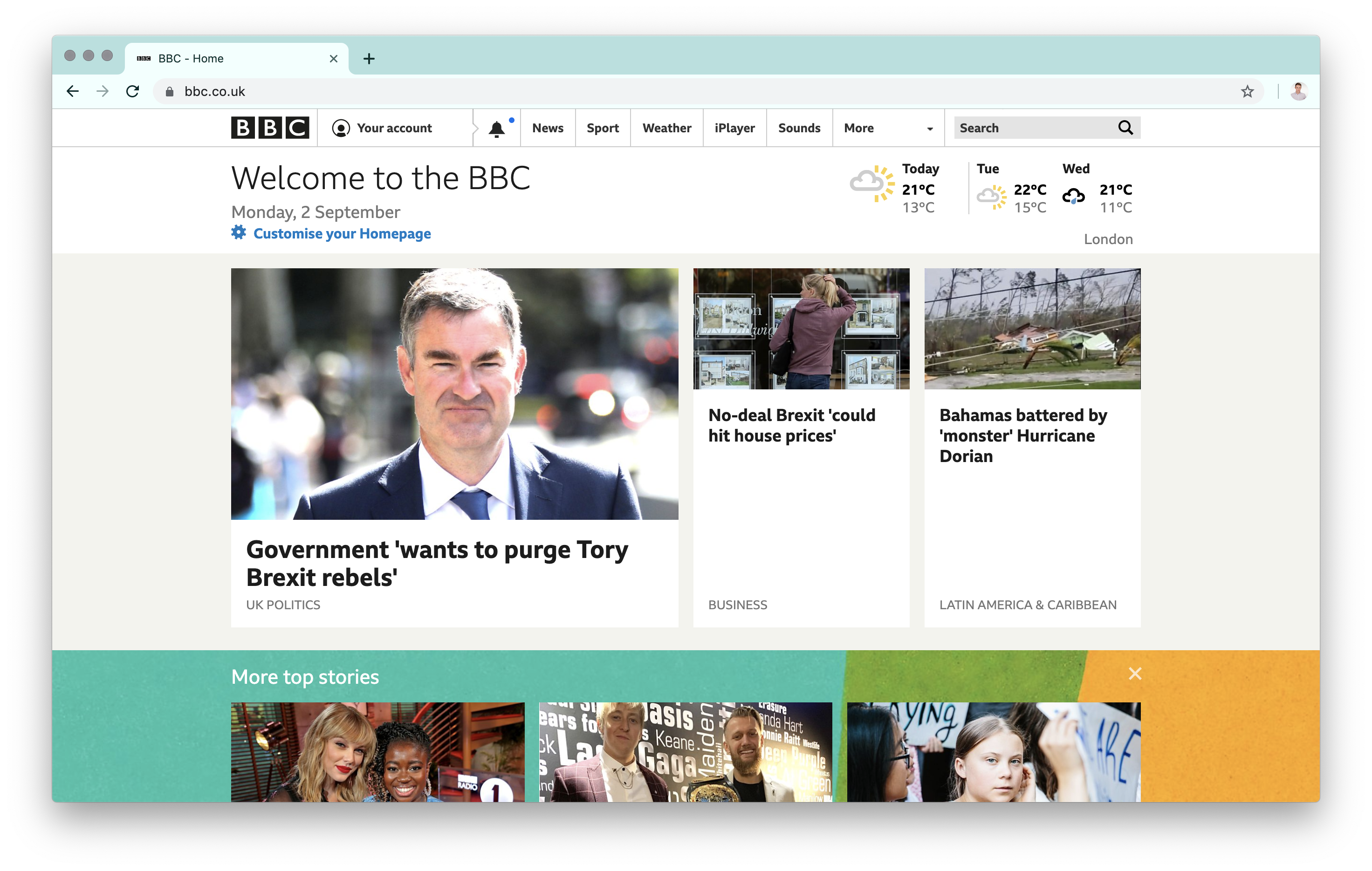
Fig 1. BBC home page allows users to set their location and interests, in order to serve customized content
Customization, however, relies on active visitor engagement. They must willingly give simple details or choose what they’d like to see. It’s less behind-the-scenes than personalization – there’s no hidden tracking that anticipates anything. However it does require slightly more effort on the user’s part. Common mechanisms for customizing a website home page, for example, include a user log-in function or an anonymous ’remember my preferences’ capability. Again often seen on news publication sites, as illustrated below, the user must set their interests or reasons for visiting the site, in the knowledge that subsequent visits will be better tailored for their requirements.
Rather than relying on stored data, this method helps acquire user data that can be used for future communications – again ensuring messages around its storage and use are compliant with standards and are agreed by the user at the time of imparting the information.
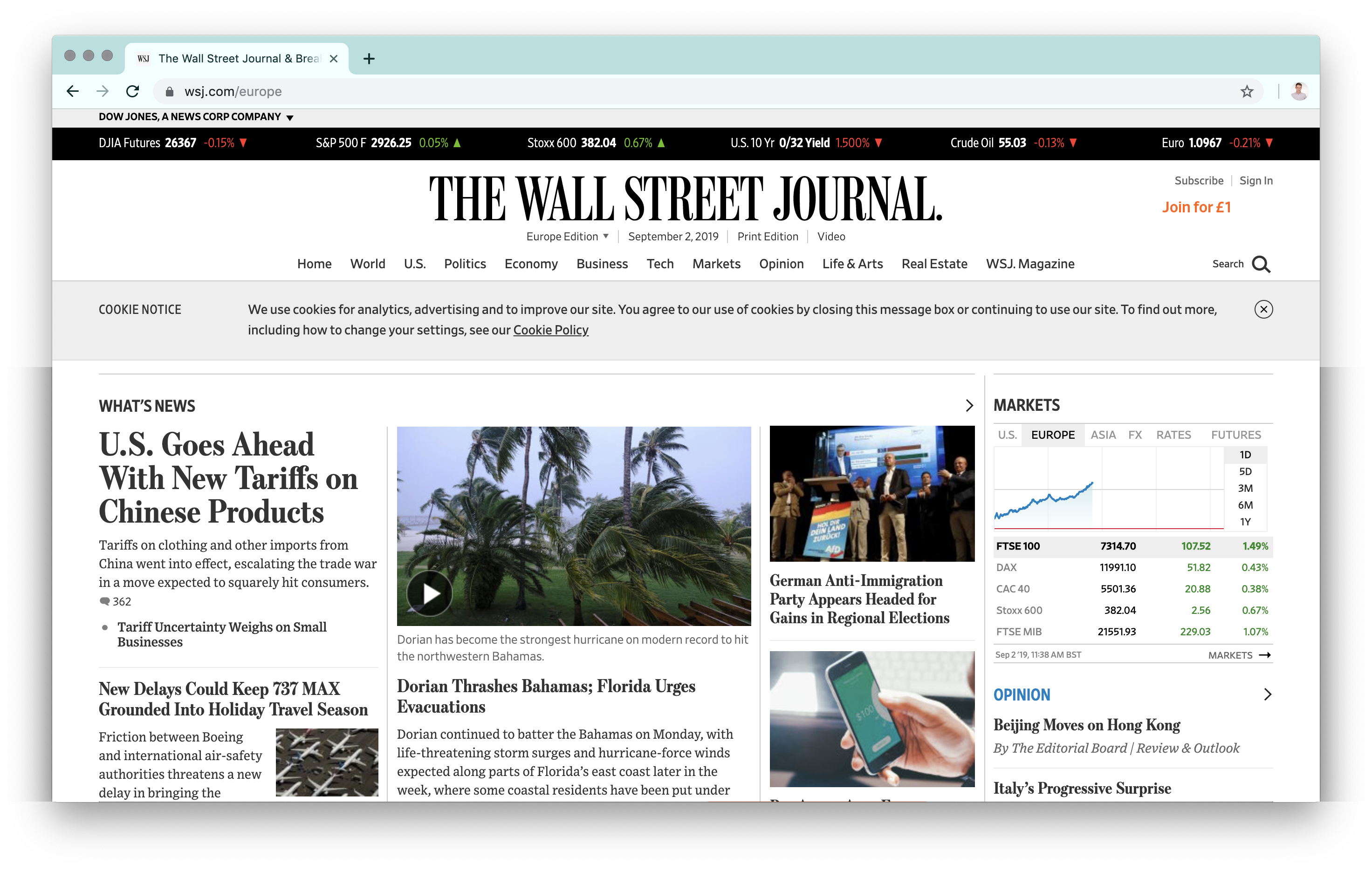
Fig 2. The Wall Street Journal home page uses localization to show European visitors the 'Europe edition' and European markets
There are some very simple tactics that can be implemented through either personalization or customization – such as website localization. As a brand that wants to deliver relevant and appropriate news, content or services to a user, the very least should be knowing where that user is in the world. Localization can tailor fundamental elements such as spelling and language, through to regional-specific content. Most brands today, however, seek to go further and provide deeper online user experiences. For the more advanced brand and marketing leaders looking for trends and technically detailed options, read Gartner’s 2019 Magic Quadrant for Personalization Engines.
In all, both personalization and customization of digital platforms allow brands to articulate their relationship-driven values. Beginning simply with considering the website experience, businesses will understand their users in more detail and users will feel a more personal relationship with the brand.

Tailored dialogue: chatbots vs live chat
While personalization and customization of digital platforms generally apply to the content served up to visitors, they are static experiences. Let’s now consider real-time, transitory digital moments between a brand and its audience – or between a business and its client – ie. the dialogue that can be used to strengthen the unique experience of a brand.
The fundamentals of brand dialogue begin with the translation of values and attributes into personality and a tone of voice. Since dialogue is a two-way interaction, it should demonstrate empathy for the individual on the other side of the conversation.
Two common examples of tailored dialogues that enhance an individual’s brand experience are chatbots and live chat.
- A chatbot is a service, powered by rules and sometimes artificial intelligence, that you interact with via a chat interface. (Chatbot Magazine, 2016)
- Live chat is typically an online conversation with another human, via a similar messaging interface.
Whilst these are unquestionably different mechanisms of conversation, they often get blurred in execution, which can result in user confusion, frustration and negative experiences. It’s therefore important to clearly communicate to the user who they are interacting with (a chatbot may encapsulate the brand personality, whereas live chat operators may use their own real-life profile photos).
It’s also important to express why your brand is using this tool. Primary uses for both methods of dialogue include diagnosing issues and providing support to clients and prospects, others include answering FAQs and linking the user to external information.
Similar to tailored content, neither of these forms of brand dialogue are better – one may be more effective for some brands, in different contexts and with different audiences. Let’s begin by looking at some examples of effective use of each.
. . .
The benefits of chatbots
Of the two, live chat is the more straightforward and cheaper to execute, however in the longer term, a chatbot is much less expensive to maintain – simply because the AI answering user questions is cheaper than a human on a payroll. That said, with a good understanding of your audience, their possible questions and journeys through sales and support traffic flows, a chatbot doesn’t have to be a big investment. It is also on path to become the most used AI application being used by businesses.
While retailers and technology companies are leading the way in using chatbots to facilitate entire customer journeys, from acquisition to purchase and delivery of a product or service, we are seeing a wider range of uses for chatbots across B2B brands – from asking for directions to the nearest office or what the weather’s like in a city, to scheduling a meeting.
For professional and financial services, the adoption of chatbots is also growing. A recent FT Money feature talks to financial services industry leaders on the capacity of chatbots to provide financial advice. Although agreeing that the technology cannot provide complex advice beyond triage surveys and basic guidance, businesses (especially in the US) are “moving away from the dichotomy of face-to-face advice versus robo-advice. A hybrid form is becoming increasingly common” – allowing human experts to continue providing personal client experiences.
“AI can complement a human adviser and allow them to spend more time focusing on both the client relationship, as well as more specialised financial needs such as complex business and trust structures.”
– ‘Would you talk about your finances with a chatbot?’, FT Money, November 8 2019
For online services, recent examples include the Sage chatbot called Pegg, a digital assistant to manage your business transactions, and Bank of America’s Erica, one of a number of successful personal banking chatbots. Vodafone has seen some incredible success metrics as it uses its commerce-enabled chatbot TOBi to drive a change in client experience.
Fundamentally, one of the most effective chatbot uses in B2B firms is as a website triage tool, to quickly identify why the user is visiting today and to provide them the quickest route to the information they seek. In many businesses, this may be as simple as providing the user with contact details to the most appropriate support person or department, or it may be directing them to a page of information around a specific legal matter.
The important thing here is understanding your users’ journeys and knowing where on the journey a chatbot would be helpful and relevant. Research and expert opinions agree that chatbots are best used for a narrow purpose – that they fail when “attempting to tackle too broad a domain”.
Fig. 3 – Possible opportunities for chatbots to improve the user experience at various locations along a website journey
Always keep in mind that the conversation or journey should create a streamlined user experience, not an elongated or annoying one. The idea that chatbots spring up a distracting hurdle in a user journey is sometimes misconceived (although unfortunately true). The placement of a dialogue option within the user journey should always be relevant.
Whatever the problem-solving reason for employing a chatbot, the opportunity always also exists to improve the brand experience once the user is engaged. As this Forrester report states, “aspirations to reduce operational costs alone should not drive chatbot build decisions”. Through carefully planned conversation triggers, chatbots can glean an abundance of user data points that can – with user consent – be used to customize that individual’s subsequent brand experiences.
Chatbots can easily and effectively articulate a brand’s personality, giving character to sometimes mundane triage questions. Creative Review recently wrote about writing for chatbots, which includes a perspective into the possible future for chat avatars and how they might represent brand personalities – for different audiences in different parts of the world, for example.
They can also be extremely useful within a member area or client portal – where a user is logged-in, safe with the knowledge that their personal data is secure, and wants quick access to files or records, or a quick answer to a frequently asked question.
Starting from simply designed conversation paths through to more complex integrated data acquisition models, chatbots can offer users an efficient and useful experience with brand personality – but so can live chat.
For more in-depth further reading, IBM’s Enterprise Design Thinking Toolkit is a highly technical but comprehensive resource for anyone interested in using data and AI to enhance user experiences – https://www.ibm.com/design/thinking/page/toolkit
. . .
The benefits of live chat
Live chat is more akin to a telephone conversation. Although younger generations are more AI-friendly than ever, for many individuals, a human-to-human interaction may feel more comfortable. So for many services and subject matters, live chat may be more appropriate than a chatbot.
One trait common across the majority of client-centric brands is responsiveness. If your business cares for its clients as much as it declares, then response time should be high on the priority list. Recent HubSpot research found that 82% of customers rated an “immediate response” as very important when asking a marketing or sales question – rising to 90% for a customer service question.
Even at the more service-led end of the scale, clients with a question want to be the number one priority. They don’t have time to listen to hold music, therefore live chat is proving to be a success for many brands. Zendesk’s comprehensive report on live chat suggests that the customer satisfaction rate for live chat beats all ticket channels at 87% customer satisfaction, above website forms (85%), email (85%), Facebook (84%) and Twitter (77%). But before we get carried away with live chat being an effective sales and support tool, let’s consider why it should primarily be a positive brand moment for your audience.
“Chat connects you with prospects, leads, and customers faster than ever. But they don’t care how fast you can say, “Hi, how can I help you?” They care how fast you can actually help them.”
– HubSpot
Finding the right way to engage
Firstly, it’s important to recognise that not all users want to use live chat. However, Econsultancy research suggests that “live chat has the highest satisfaction levels for any customer service channel, with 73%, compared with 61% for email and 44% for phone”. Compound this with the opportunity to exhibit deep client care through conversations and digital brand experiences will begin to mirror the physical and environmental experiences that keep clients coming back.
It’s in your interest to enable your audience to engage with you on a platform that works for them. McKinsey has looked at engaging customers in the way they want to be engaged. There are a variety of reasons businesses use live chat to enhance their customer experience – from offering a triage for support or simply to accelerate proactive conversations.
It’s important here to dwell briefly on tone of voice for live chat. Hygienic customer service etiquette and empathy is imperative, but this is an opportunity to project your brand personality and behavior in the same way as you would via email. Would your audience respond better to short, direct sentences and faster responses without the niceties – or would they appreciate acknowledgement of every message, colloquial language and small talk about their day?
Similar to chatbots, conversations and information discovered from live chat can become a valuable source of user data. Fed into a CRM and mapped against contacts and leads, conversation insights can be interpreted to provide real-time brand engagement scores, as well as typical lead generation and customer satisfaction scores.
Depending on the platform, you may or may not already have a set of traffic or acquisition flows, so a review of current analytics against any traffic flow objectives should be the first point of call. Using simple analytics, you can evaluate the brand touch points users currently experience and you should be able to identify what works well and what doesn’t.
Are platform visitors dropping off at unexpected places? Are user journeys to flagship content not the paths you anticipated? Is your platform just too big or complex for all audiences to find answers to their questions efficiently? Of course new technology such as live chat should not try to rectify any underlying architectural issues – these should be addressed before even thinking about further dialogue.

Tailored consumption: layered infographics and stacked content
Infographics were all the rage ten years ago, helping businesses to illustrate their messaging or highlight their insight more clearly. Now they’ve reached a level of sophistication whereby brands can use them more cleverly. They are showing deeper levels of audience empathy and understanding, in order to provide different perspectives and serve up information that’s most valuable to individual users.
Take a look at McKinsey’s latest Five Fifty report on Tech for the greater good. Whilst an interesting read, it goes a strategic step further and encourages users to uncover more in-depth analysis and opinion around specific segments, such as health, education or environmental sustainability. As well as being an immersive and visually pleasing piece of content, it clearly seeks to engage certain target audiences with interests in specific areas of business or society.
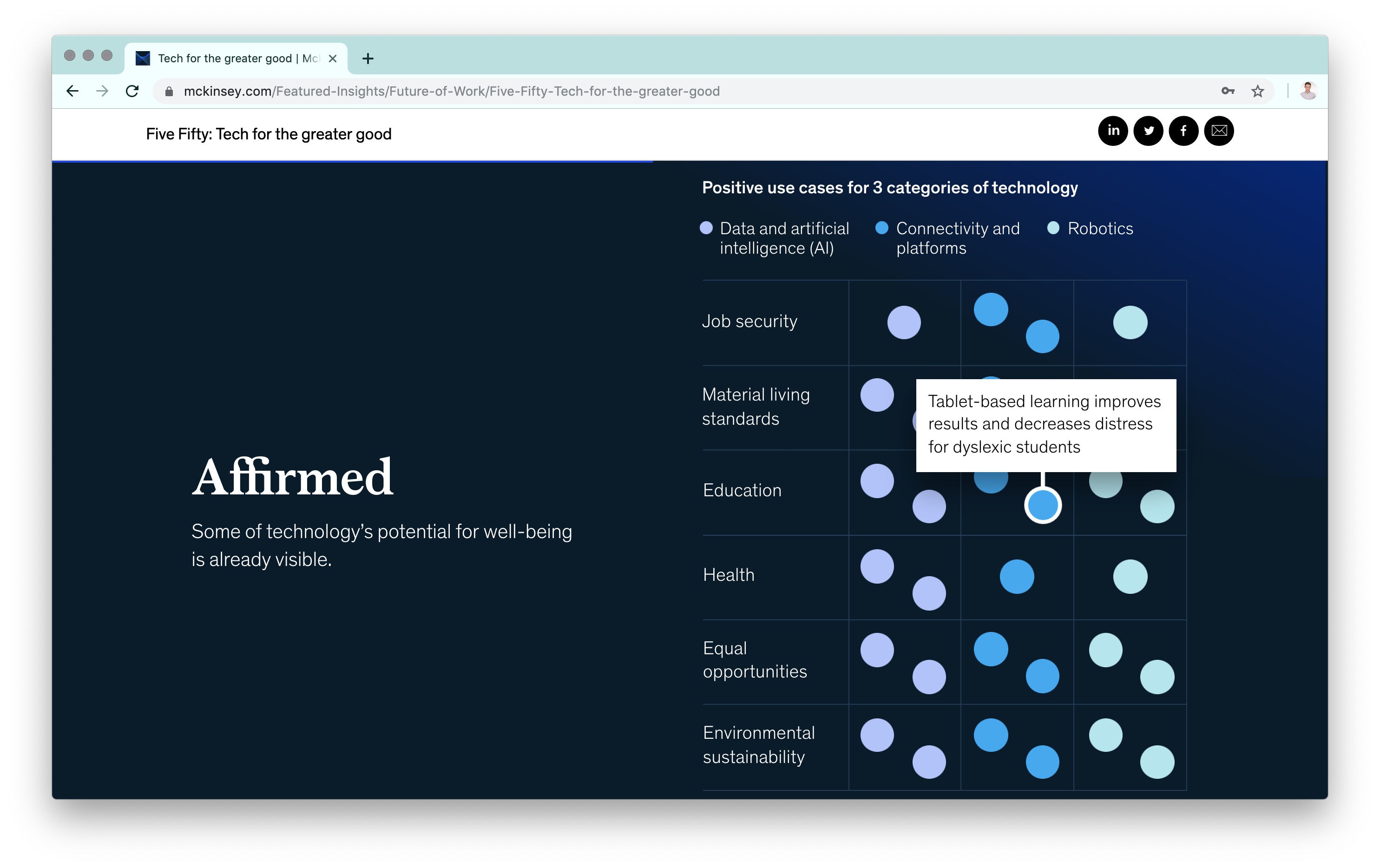
Fig. 4 – Tech for the greater good (McKinsey & Company) interactive infographic allows users to reveal segmented data
Beyond infographics
A simple extension to the scope of an infographic, for example, is often not difficult to achieve. Once you have clearly identified your target audience(s) and understood their current interests, trends and potential pain points, simply design mechanisms for users to explore primary ideas in more detail and from different perspectives.
Examples can include opinions from experts in particular industries, or visuals that illustrate findings with a particular sector lens or that are broken down by location or demographic.
McKinsey and PwC are just two of many brands that consistently produce well-considered interactive infographics that enable their audiences to explore data that’s relevant to them. PwC reports such as the Global Top 100 companies are often deployed as a hub of content – in this case, the first infographic shown gives the user the opportunity to explore the information by region, which reveals region-specific data, leading companies and change from previous years for that region.
When planning or undertaking research ahead of a piece of thought leadership, consider whether widening research criteria and data points could allow for deeper exploration of particular insights that your primary audiences might value.

Fig. 5 – Global 100 Top companies interactive infographics (PwC) encourages users to explore data by country and industry
As well as being engaging for audiences to explore, the underlying concept saves the user time and effort searching for information and heightens the overall experience. Serving up specifically relevant information for the user (once they have chosen what they wish to view) demonstrates how the brand truly understands what the user needs.
. . .
Just as content strategy is generally about how to provide high value content to readers by understanding their needs, rather than directly writing about products or services, the same perspective should be considered when designing consumption tactics and planning how users experience content. This is especially important for brands that outwardly assert their deep care and understanding of their clients.
A highly effective means of demonstrating empathy and understanding of your clients’ consumption habits is to diversify ways in which a piece of content is disseminated. This doesn’t necessarily mean ‘only do video because my clients watch videos’. Instead, your go-to-market campaign should include a video component alongside other forms of media. Even the simplest of empathy maps or audience personas can shed light on how your audience interacts with a platform or consumes content. Once you have a concrete idea of who your audiences are, where they are, what they’re looking for, how and why they’re looking for it, you will be in a position to define which types of media will best resonate with your audience. In short: know your audience’s content consumption habits and aim to cater for all.
For example, Accenture’s 2019 Technology Trends report is served-up as an immersive hub, but much of the experience is simply different ways of communicating the same piece of content. A brief/abstract of three top-line bullets provides high-bounce-rate visitors with a quick overview, tabs provide shortcuts to chapters and a downloadable PDF report (also accessible via an anchored download button) allows ‘read-it-later’ visitors to print or pick up the report offline. On top of these, an energetic video – with text subtitles and a full transcript – provides an audio-visual introduction to the initiative. Then, past a full landing page of quotes and related links, users are presented with three ‘essential’ options: the ‘big read’ full report, with a 20 minute read time indicator, the short 10 minute version and an embedded SlideShare version.
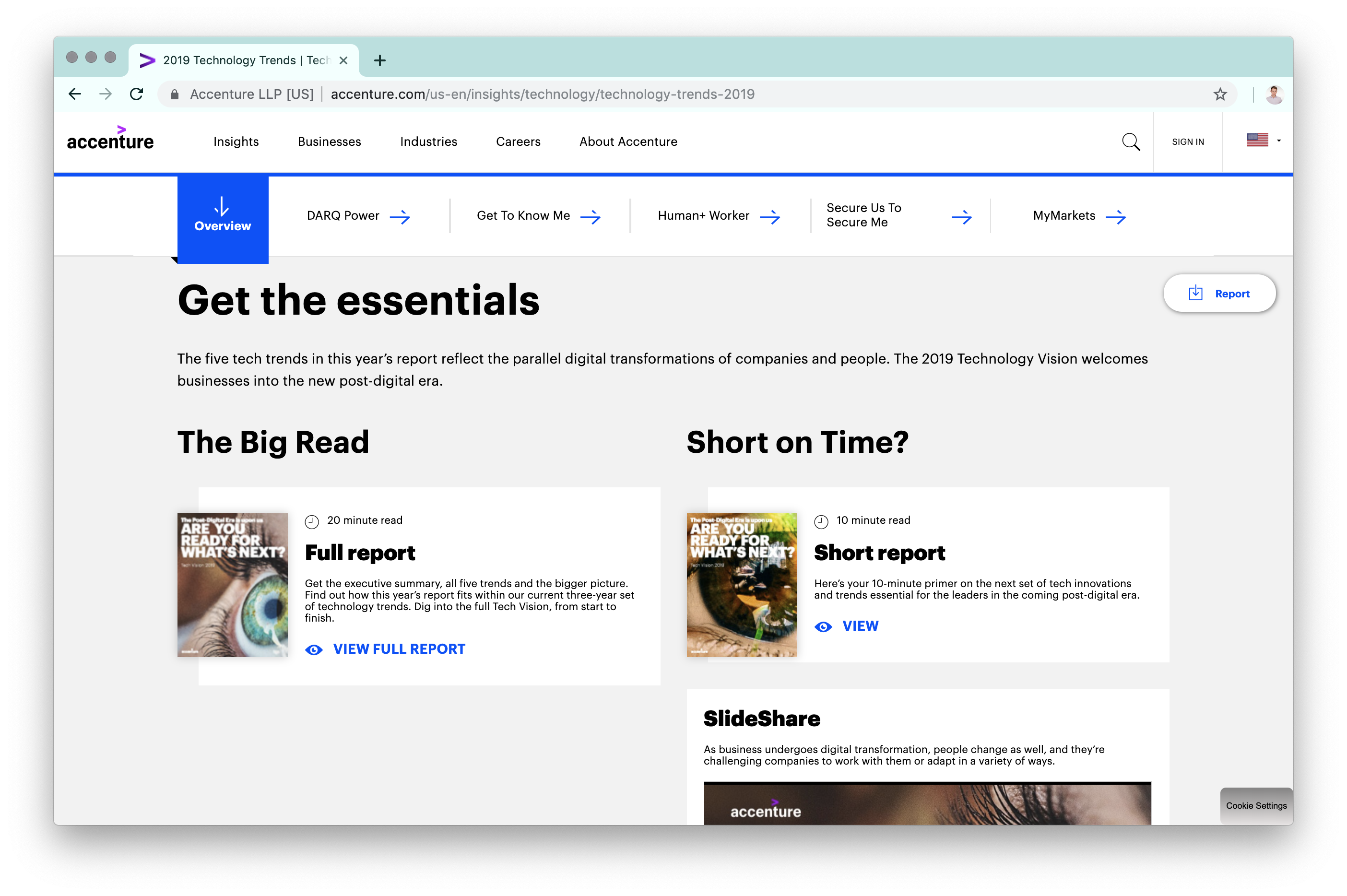
Fig 6. Technology trends 2019 report (Accenture) caters for multiple audience through a range of content types and formats
This may all seem excessive, but presented with clear design and signposting, it caters for a wide variety of audience consumption methods. CTAs such as “Short on time?” or “Get the essentials” suggest to time-poor readers that there’s a quick version tailored for their next 10 minute break. Video content can be filtered down across social channels, giving fast-scrolling followers the two second exposure they need to engage. Then there’s the accessibility aspect – ensuring video has subtitles and a separate text transcript. And we haven’t touched on the SEO benefits of publishing different media on multiple platforms that repurpose core content for different consumers.
What Accenture doesn’t do here is allow users to explore in more depth different perspectives, industries or geographies. It doesn’t serve up content to the personal level of the news websites discussed earlier, so it’s still rather one-dimensional in that sense. But there will be dissemination tactics that should apply to your branded content as well – whether as simple as a read time indicator or considering audio/audio-visual versions of content.
The place to start is undoubtedly understanding your audience. Personally, I like to use Pocket to curate articles, reports and branded content. The Google Chrome browser extension and app are easy to use. I then either read on my phone or laptop, or use the Pocket audio tool to listen to a narrated version. Therefore if presenting interactive infographics in a ‘long read’ version of a piece of content, it would be important to include insights and key findings within the copy for me as an audio consumer. Your audiences will consume content in different ways.
. . .
We are seeing fast-moving content platforms give more power to users to curate their own feeds – both in user-generated content and targeted advertising. With capabilities to hide, unfollow and ‘see less of’ content that’s not interesting or useful to them, users are growing accustomed to choosing what content is served up to them. Convenience is key in the digital age, suggests Raconteur, reiterating how time-poor and eager for personalized experiences we all are.
Meanwhile, industries that still strive to be customer-focused sometimes don’t consider the importance of relationships outside of face-to-face client service, such as digital user experience. For brands that pride themselves in being all about the client and the relationship, with increased competition for attention, these experiences now need to be better than ever.
If your priority as a business is to understand your audience and provide personal service and tailored experiences to your clients, as we see being successfully done in face-to-face moments, ensure your users’ online experience doesn’t let your brand down.
